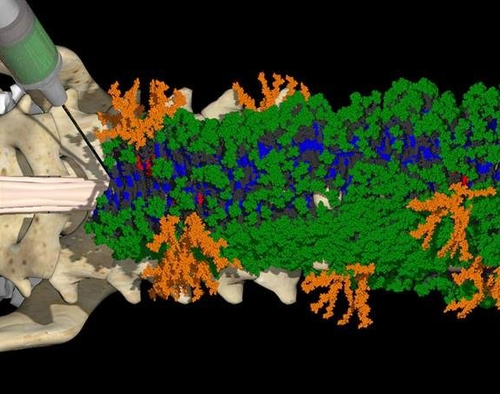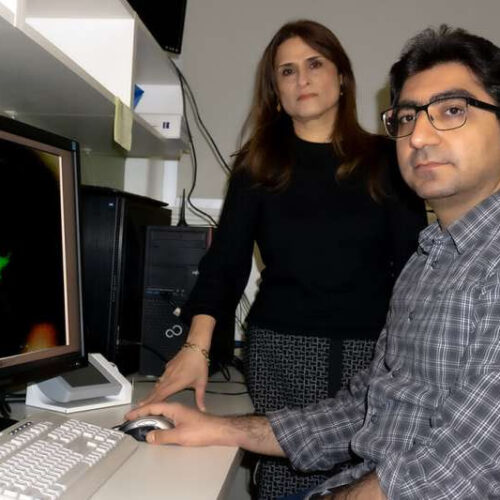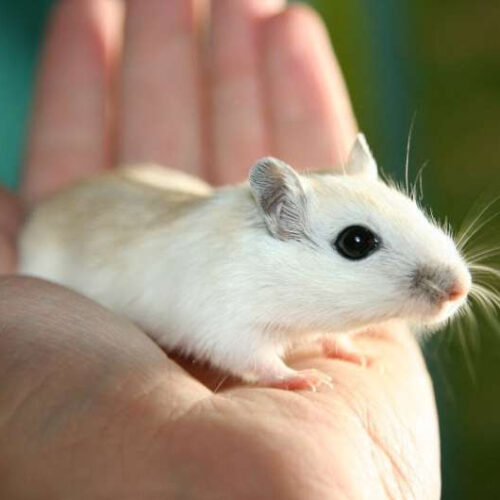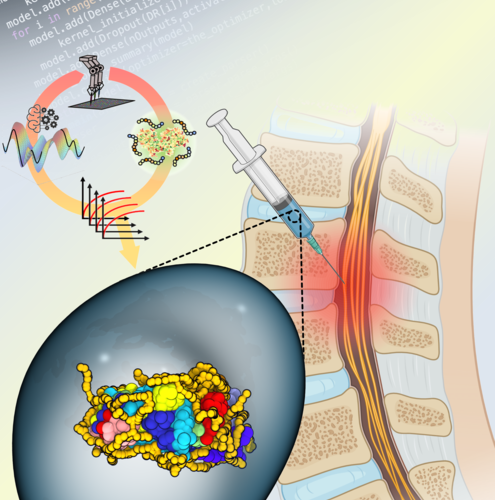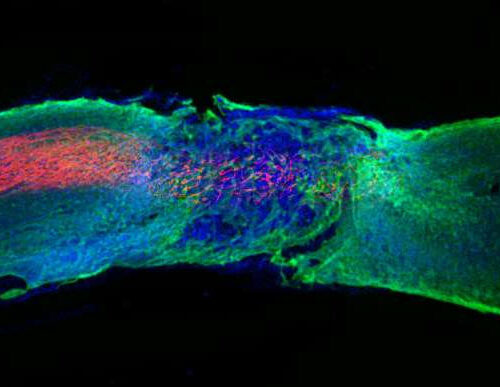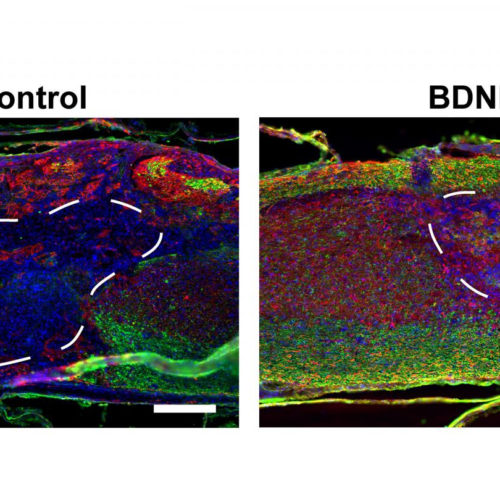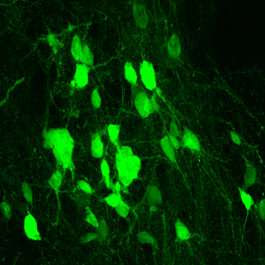by Kurt Bodenmüller, University of Zurich New nerve connections form. Credit: The Lancet Neurology (2024). DOI: 10.1016/S1474-4422(24)00447-2 Antibodies can improve the rehabilitation of people with acute spinal cord injury. Researchers at 13 clinics in Germany, Switzerland, the Czech Republic and Spain have investigated this with promising results. For the first time, it was possible to identify patient groups...
Tag: <span>spinal cord injuries</span>
‘Chance Finding’ a True Breakthrough for Spinal Cord Injury?
Pauline Anderson December 13, 2024 0132 Added to Email Alert Deep brain stimulation (DBS) of the lateral hypothalamus (LH) improves walking and promotes recovery in patients with spinal cord injury (SCI), new research showed. This intervention excites glutamatergic neurons in the LH, which appear to be key to restoring movement. The results represent a shift...
Immune system discovery could benefit spinal cord injuries
UNIVERSITY OF VIRGINIA HEALTH SYSTEM New research suggests that the immune system’s ability to respond to spinal cord injuries diminishes with age – and identifies potential avenues to improve that response and help patients heal. The new findings offer important insights into how the immune system responds to spinal-cord injuries, and why that response becomes blunted with the passing...
Fixing spinal cord injuries with ‘dancing molecules’
DOE/US DEPARTMENT OF ENERGY Image: In a new injectable therapy that repairs spinal cord injuries, molecules form nanofibers that ‘dance’ around, making communication with cells to repair the injured spinal cord more likely. Credit: Image courtesy of Northwestern University The Science A new injectable therapy for spinal cord injuries uses specially engineered molecules that trigger...
New stem cell therapy for treating spinal cord injuries
by University of Manitoba Dr. Seyed Mojtaba Hosseini (right) and Dr. Soheila Karimi have published a paper in the Journal of Neuroscience about a new stem cell therapy for treating spinal cord injuries. Credit: University of Manitoba A new study by University of Manitoba researchers has developed a stem cell-based therapy that may eventually lead to new...
Novel injection repairs severe spinal cord injuries in mice
Credit: CC0 Public Domain A brighter future could be in store for people with a spinal cord injury if new animal research pans out in humans. Mice that were paralyzed due to severe spinal cord damage regained the ability to walk within four weeks of receiving an experimental injectable therapy, say researchers led by Samuel...
Rutgers researchers harness AI and Robotics to treat spinal cord injuries
RUTGERS UNIVERSITY IMAGE: RUTGERS RESEARCHERS HARNESSED AI AND ROBOTICS TO DELIVER NEW HOPE FOR PATIENTS WITH SPINAL CORD INJURIES. CREDIT: PHOTO COURTESY OF RUTGERS SCHOOL OF ENGINEERING By employing artificial intelligence (AI) and robotics to formulate therapeutic proteins, a team led by Rutgers researchers has successfully stabilized an enzyme able to degrade scar tissue resulting...
‘Dancing molecules’ successfully repair severe spinal cord injuries in mice
by Northwestern University Longitudinal spinal cord section treated with the most bioactive therapeutic scaffold. Regenerated axons (red) regrew within the lesion. Credit: Samuel I. Stupp Laboratory/Northwestern University Northwestern University researchers have developed a new injectable therapy that harnesses “dancing molecules” to reverse paralysis and repair tissue after severe spinal cord injuries. In a new study,...
Injectable porous scaffolds promote better, quicker healing after spinal cord injuries
AMERICAN INSTITUTE OF PHYSICS IMAGE: Images show myelinated axons in biomaterial scaffolds eight weeks after injection into the injured cord of a mouse. Scaffolds were fabricated from hyaluronic acid (HA) with a regular network of cell-scale macropores and loaded with gene therapy vectors encoding for brain-derived neurotrophic factor (BDNF), to promote axonal survival and regeneration....
Putting a protein into overdrive to heal spinal cord injuries
by UT Southwestern Medical Center New spinal neurons converted from glia. Credit: UT Southwestern Medical Center Using genetic engineering, researchers at UT Southwestern and Indiana University have reprogrammed scar-forming cells in mouse spinal cords to create new nerve cells, spurring recovery after spinal cord injury. The findings, published online today in Cell Stem Cell, could offer hope for the...
- 1
- 2

